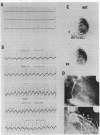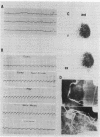Abstract
Asymptomatic adults with normal physical examination, normal resting electrocardiogram, and normal routine laboratory evaluation who have a positive exercise electrocardiogram and abnormal exercise thallium-201 myocardial image have a very high probability of angiographically significant coronary artery disease. If, on the other hand, the exercise electrocardiogram is positive for "ischaemic" ST segment changes, but the exercise thallium image is normal, the probability for coronary disease is low. The exercise electrocardiogram combined with thallium-201 myocardial image are safe non-invasive methods which can be performed on an out-patient basis.
Full text
PDF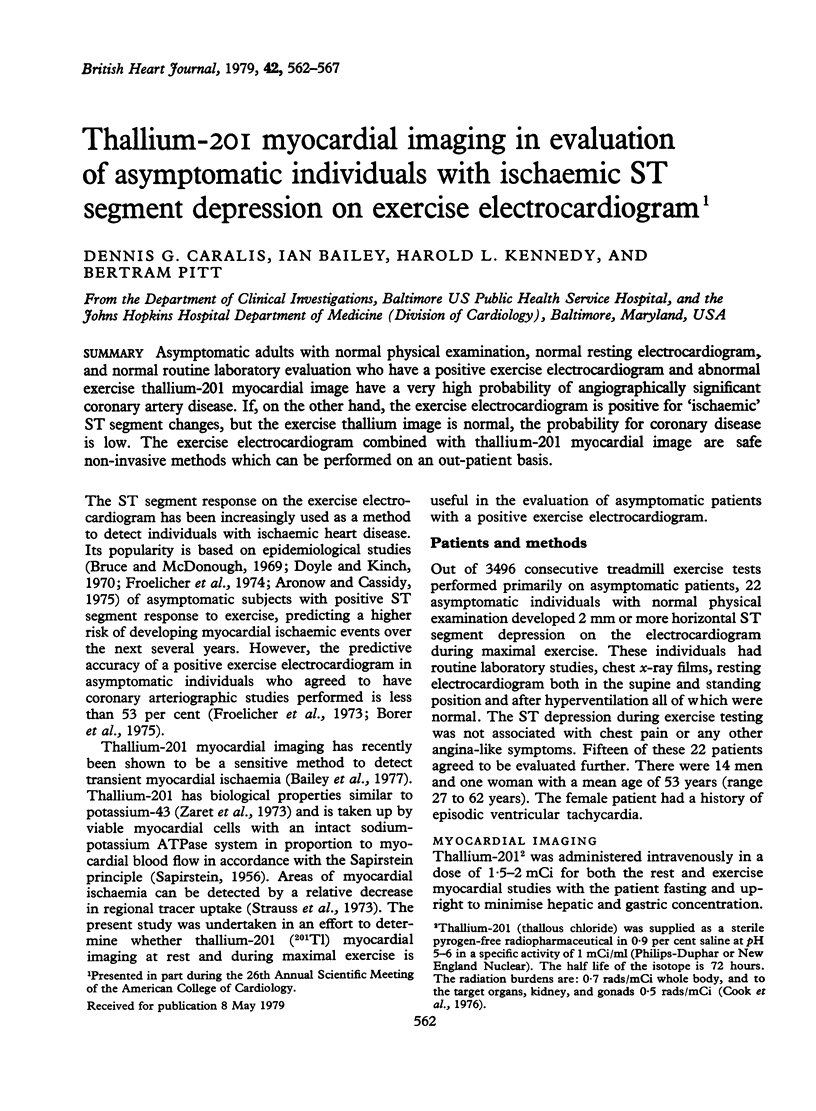
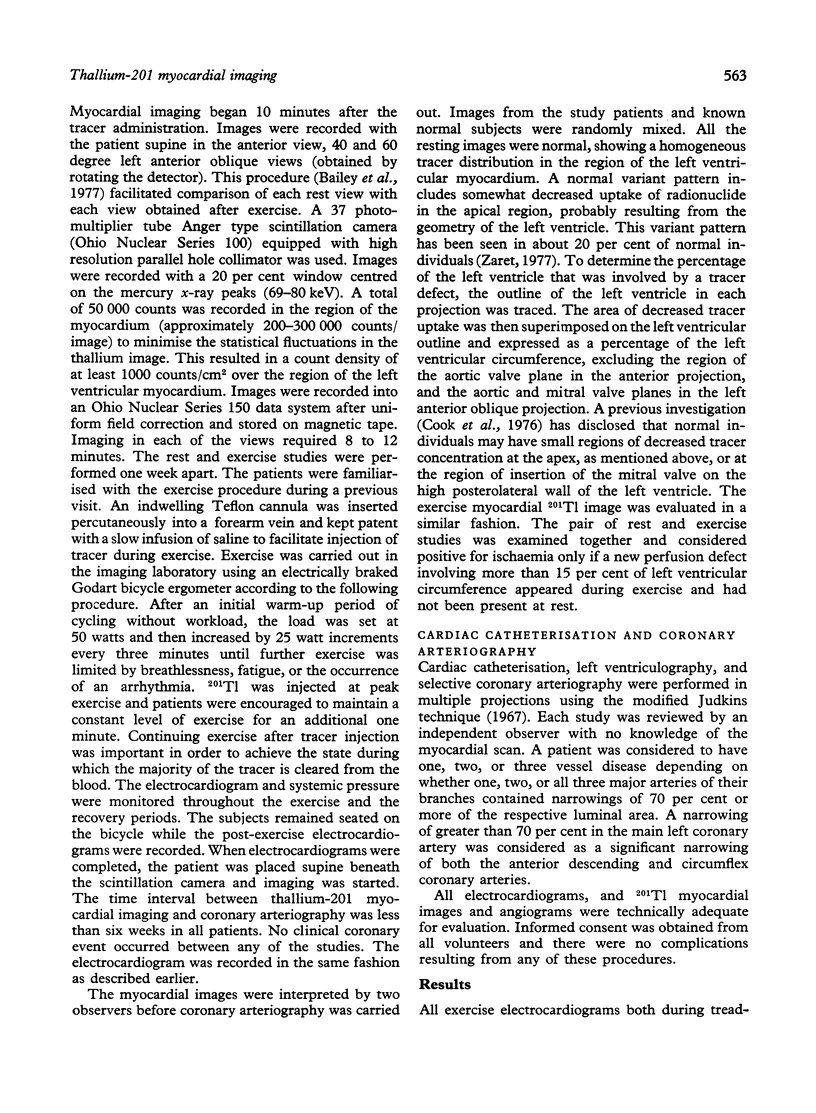
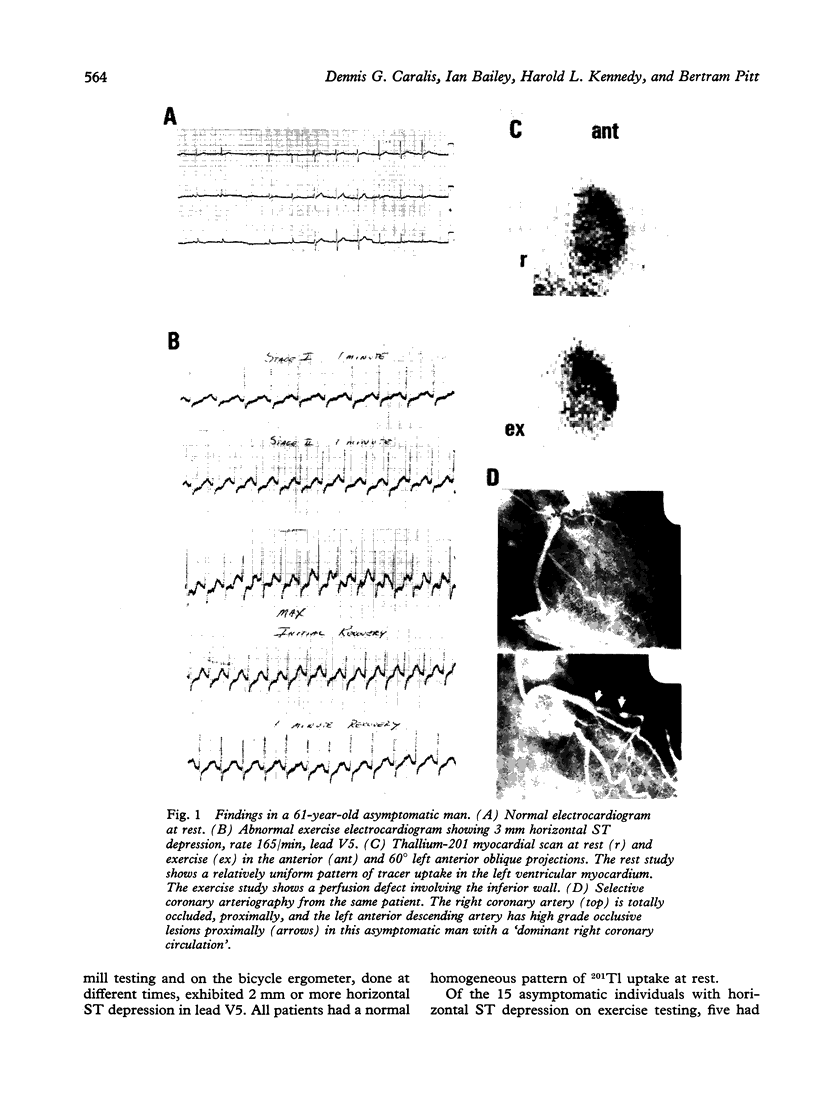
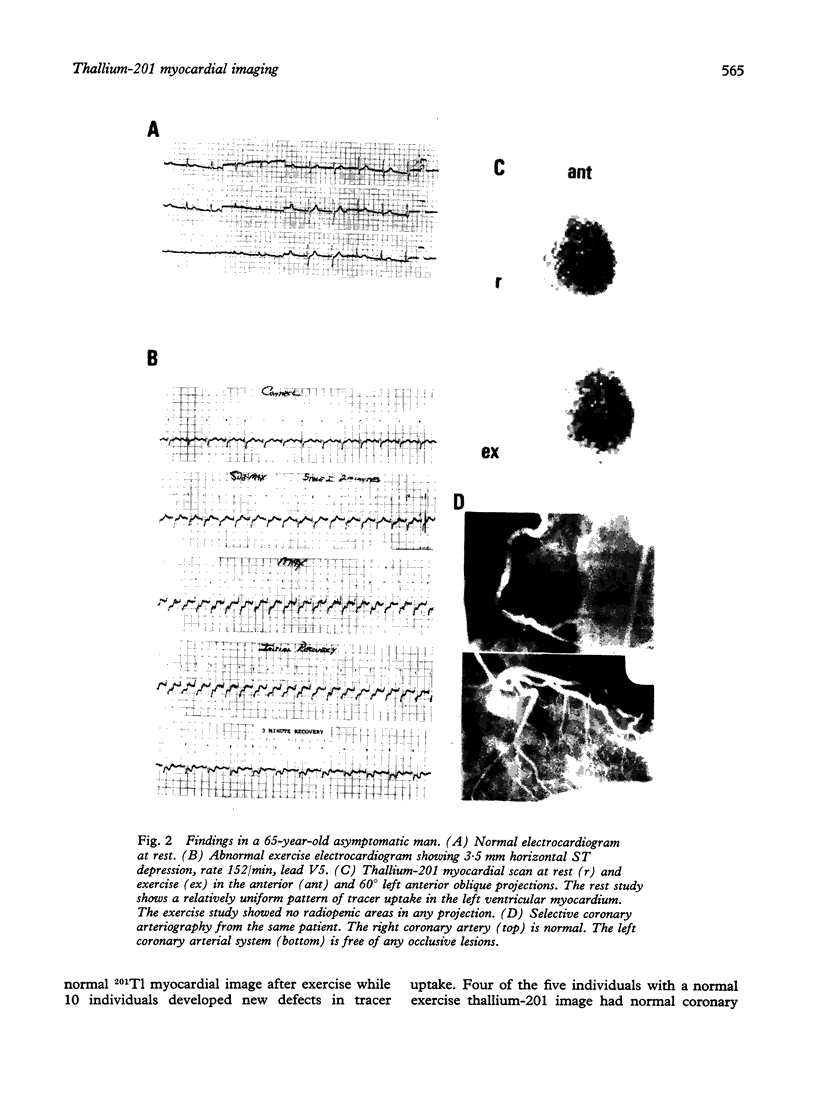
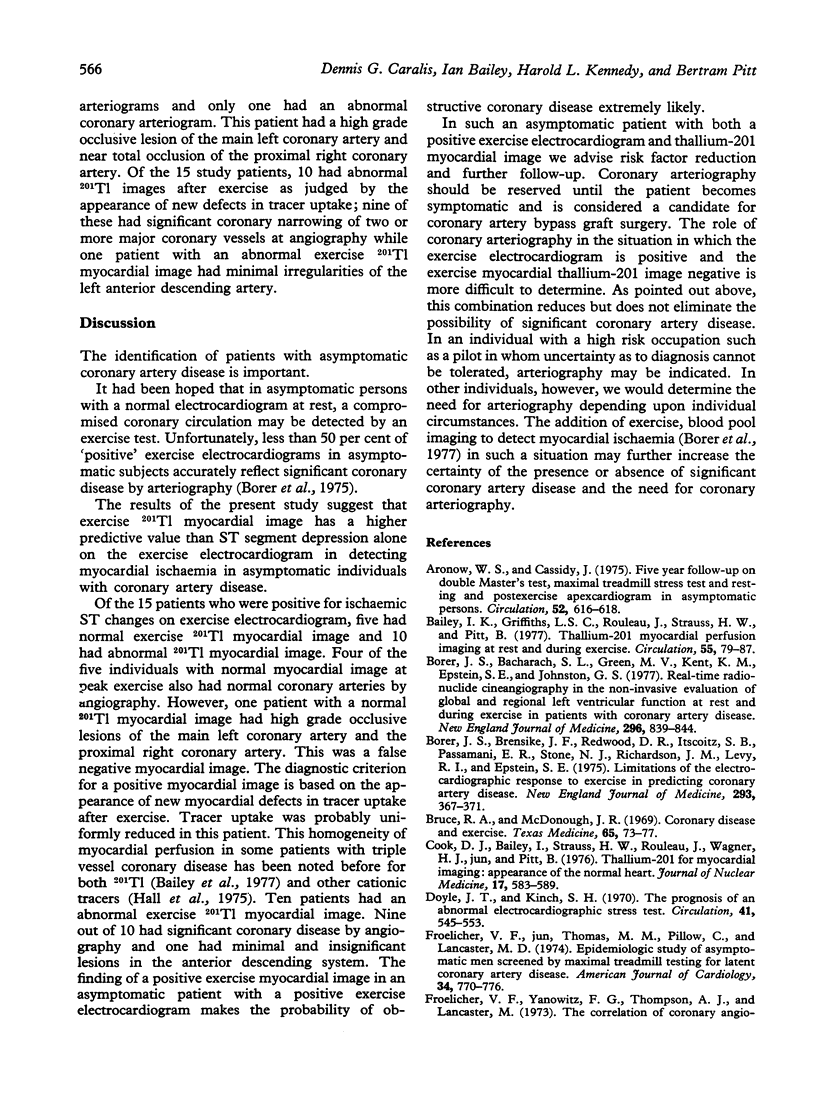
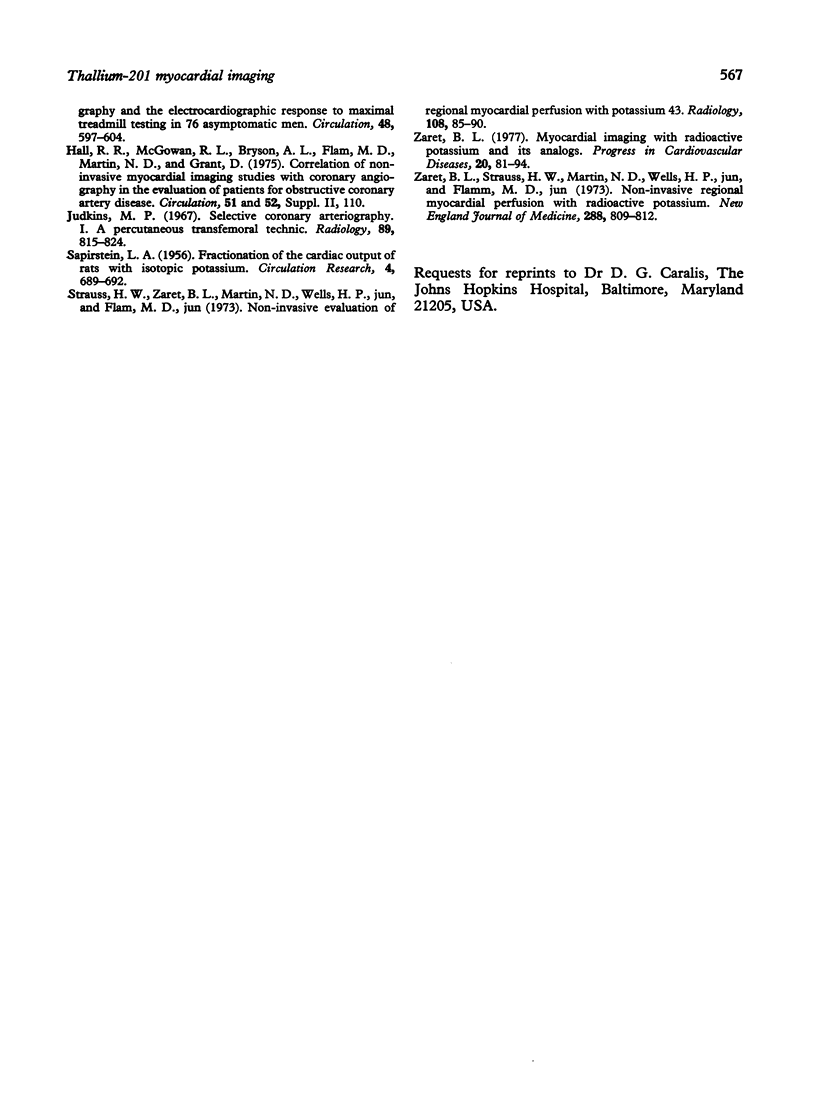
Images in this article
Selected References
These references are in PubMed. This may not be the complete list of references from this article.
- Aronow W. S., Cassidy J. Five year follow-up of double Master's test, maximal treadmill stress test, and resting and postexercise apexcardiogram in asymptomatic persons. Circulation. 1975 Oct;52(4):616–618. doi: 10.1161/01.cir.52.4.616. [DOI] [PubMed] [Google Scholar]
- Bailey I. K., Griffith L. S., Rouleau J., Strauss W., Pitt B. Thallium-201 myocardial perfusion imaging at rest and during exercise. Comparative sensitivity to electrocardiography in coronary artery disease. Circulation. 1977 Jan;55(1):79–87. doi: 10.1161/01.cir.55.1.79. [DOI] [PubMed] [Google Scholar]
- Borer J. S., Bacharach S. L., Green M. V., Kent K. M., Epstein S. E., Johnston G. S. Real-time radionuclide cineangiography in the noninvasive evaluation of global and regional left ventricular function at rest and during exercise in patients with coronary-artery disease. N Engl J Med. 1977 Apr 14;296(15):839–844. doi: 10.1056/NEJM197704142961503. [DOI] [PubMed] [Google Scholar]
- Borer J. S., Brensike J. F., Redwood D. R., Itscoitz S. B., Passamani E. R., Stone N. J., Richardson J. M., Levy R. I., Epstein S. E. Limitations of the electrocardiographic response to exercise in predicting coronary-artery disease. N Engl J Med. 1975 Aug 21;293(8):367–371. doi: 10.1056/NEJM197508212930801. [DOI] [PubMed] [Google Scholar]
- Bruce R. A., McDonough J. R. Coronary disease and exercise. Tex Med. 1969 May;65(5):73–77. [PubMed] [Google Scholar]
- Cook D. J., Bailey I., Strauss H. W., Rouleau J., Wagner H. N., Jr, Pitt B. Thallium-201 for myocardial imaging: appearance of the normal heart. J Nucl Med. 1976 Jul;17(7):583–589. [PubMed] [Google Scholar]
- Doyle J. T., Kinch S. H. The prognosis of an abnormal electrocardiographic stress test. Circulation. 1970 Mar;41(3):545–553. doi: 10.1161/01.cir.41.3.545. [DOI] [PubMed] [Google Scholar]
- Froelicher V. F., Jr, Thomas M. M., Pillow C., Lancaster M. C. Epidemiologic study of asymptomatic men screened by maximal treadmill testing for latent coronary artery disease. Am J Cardiol. 1974 Dec;34(7):770–776. doi: 10.1016/0002-9149(74)90694-8. [DOI] [PubMed] [Google Scholar]
- Froelicher V. F., Jr, Yanowitz F. G., Thompson A. J., Lancaster M. C. The correlation of coronary angiography and the electrocardiographic response to maximal treadmill testing in 76 asymptomatic men. Circulation. 1973 Sep;48(3):597–604. doi: 10.1161/01.cir.48.3.597. [DOI] [PubMed] [Google Scholar]
- Judkins M. P. Selective coronary arteriography. I. A percutaneous transfemoral technic. Radiology. 1967 Nov;89(5):815–824. doi: 10.1148/89.5.815. [DOI] [PubMed] [Google Scholar]
- SAPIRSTEIN L. A. Fractionation of the cardiac output of rats with isotopic potassium. Circ Res. 1956 Nov;4(6):689–692. doi: 10.1161/01.res.4.6.689. [DOI] [PubMed] [Google Scholar]
- Strauss H. W., Zaret B. L., Martin N. D., Wells H. P., Jr, Flamm M. D., Jr Noninvasive evaluation of regional myocardial perfusion with potassium 43. Technique in patients with exercise-induced transient myocardial ischemia. Radiology. 1973 Jul;108(1):85–90. doi: 10.1148/108.1.85. [DOI] [PubMed] [Google Scholar]
- Zaret B. L. Myocardial imaging with radioactive potassium and its analogs. Prog Cardiovasc Dis. 1977 Sep-Oct;20(2):81–94. doi: 10.1016/0033-0620(77)90001-9. [DOI] [PubMed] [Google Scholar]
- Zaret B. L., Strauss H. W., Martin N. D., Wells H. P., Jr, Flamm M. D., Jr Noninvasive regional myocardial perfusion with radioactive potassium. Study of patients at rest, with exercise and during angina pectoris. N Engl J Med. 1973 Apr 19;288(16):809–812. doi: 10.1056/NEJM197304192881602. [DOI] [PubMed] [Google Scholar]



